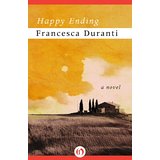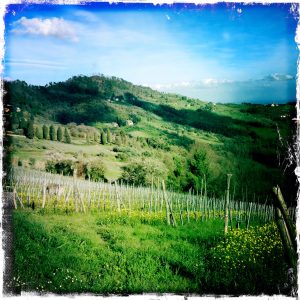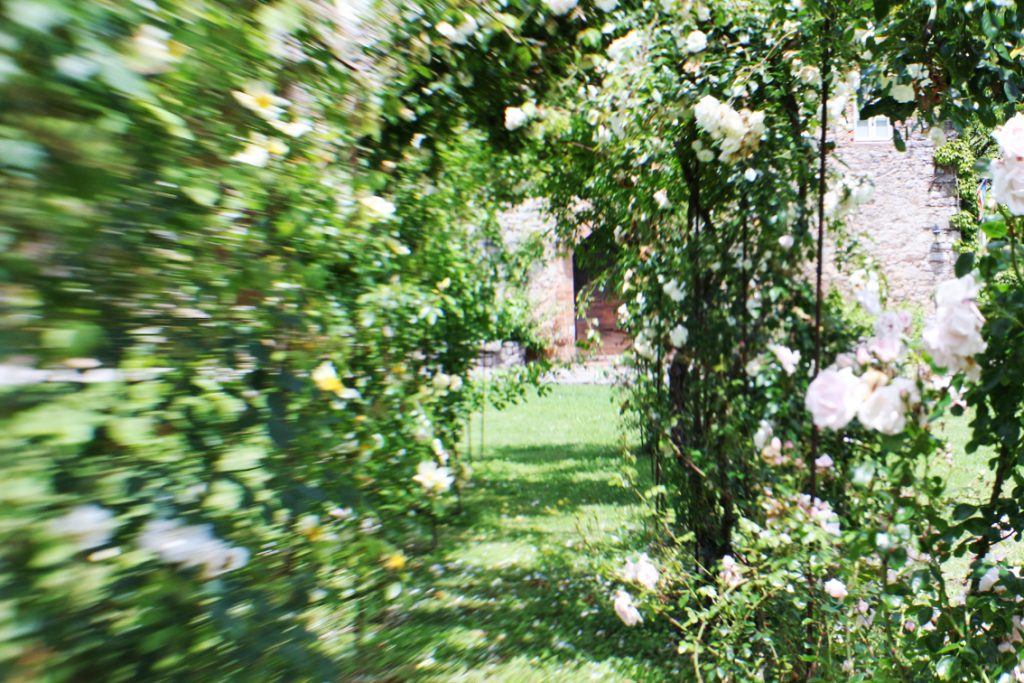A bit of cross-blogging
 Once again my good blogfriend Moira (at Clothesinbooks.blogspot.com) and I are indulging in a bit of cross-blogging, in which we choose a book for both of us to read and put up a post about it on the same day. This time it is Happy Ending by Italian writer, Francesca Duranti (1987), also the book most recently chosen by the wonderful multi-national book group to which I belong. This post owes something to an illuminating discussion that we had earlier in the week and I’d like to thank the group for so much reading pleasure and friendship over the years.
Once again my good blogfriend Moira (at Clothesinbooks.blogspot.com) and I are indulging in a bit of cross-blogging, in which we choose a book for both of us to read and put up a post about it on the same day. This time it is Happy Ending by Italian writer, Francesca Duranti (1987), also the book most recently chosen by the wonderful multi-national book group to which I belong. This post owes something to an illuminating discussion that we had earlier in the week and I’d like to thank the group for so much reading pleasure and friendship over the years.
The setting of Happy Ending is an estate in the countryside outside Lucca, and the time is a midsummer week-end sometime in the 1980s. There are three houses: the matriarch Violante lives in one, her son Leopoldo who is in a sexless marriage with his rich American wife, Cynthia, lives in another. The third is empty, waiting for the summer visit of Lavinia who was married to Violante’s older son, Filippo. Their brief and disastrous marriage was cut short twenty years ago by Filippo’s death and their son, Nicola, has been raised by Violante. The family are all observed by their friend and neighbour, Aldo, who has always been in love with Lavinia, who in her turn has been infatuated by a series of awful men. All the characters are blocked in some way and then a young man, a friend of Nicola’s, arrives . . .
 What I enjoyed most about this book was the setting: the houses, the garden, the drowsy midsummer heat, which made me long to go back to Italy. I wasn’t so keen on the characters and I found Lavinia in particular very irritating. And when late in the novel Violante remarks, ‘I have ruled like a czarina, and now they are all good-for-nothing,’ I really had to agree. That summed up my feeling about these privileged, mostly idle, people. But maybe that is to take too seriously what is really a comedy in which, as in A Midsummer Night’s Dream, Bergman’s Smiles of a Summer Night, and The Marriage of Figaro, everything in the end is magically resolved.
What I enjoyed most about this book was the setting: the houses, the garden, the drowsy midsummer heat, which made me long to go back to Italy. I wasn’t so keen on the characters and I found Lavinia in particular very irritating. And when late in the novel Violante remarks, ‘I have ruled like a czarina, and now they are all good-for-nothing,’ I really had to agree. That summed up my feeling about these privileged, mostly idle, people. But maybe that is to take too seriously what is really a comedy in which, as in A Midsummer Night’s Dream, Bergman’s Smiles of a Summer Night, and The Marriage of Figaro, everything in the end is magically resolved.
And I did like Aldo and the account of how as a poverty-striken fourteen year old at the end of the war he wandered into a neglected estate and spied on a party of rich and glamorous people. This enchanting experience inspired his career as a forger of paintings and then as a successful art historian (sadly my own career as an art historian hasn’t enabled me to live in fortified house near Lucca. Something must have gone wrong somewhere). And there was a nice little twist at the end which I enjoyed. To sum up: wonderful setting, some excellent writing, but not entirely my kind of novel.
So what did Moira make of it? I long to know and will add a link when her post is up.
Here it is! Fascinated to find that this time we were not quite in agreement: Clothesinbooks.blogspot.com.
These glorious photos came via Moira from PerryPhotography. One is of the countryside outside Lucca, and the one of the house and garden is reproduced by kind permission of the owners, K & T Wynn. My thanks to them and to PerryPhotography.

4 Comments
moira @ClothesInBooks
June 17, 2016Aha! For once we are not in total agreement – though both basically liking the book. Perhaps we need a holiday in Lucca where we both read the book again, and discuss it over beautiful Tuscan meals? It might be the only way forward..
Christine Poulson
June 17, 2016Cannot think right now of anything I would like better . . .
tracybham
June 17, 2016This doesn’t sound like my type of book, although the setting would be interesting. You and Moira are a good reviewing pair.
Christine Poulson
June 18, 2016Thank you, Tracy! Moira and I have only met on-line, but we’ve become good friends.